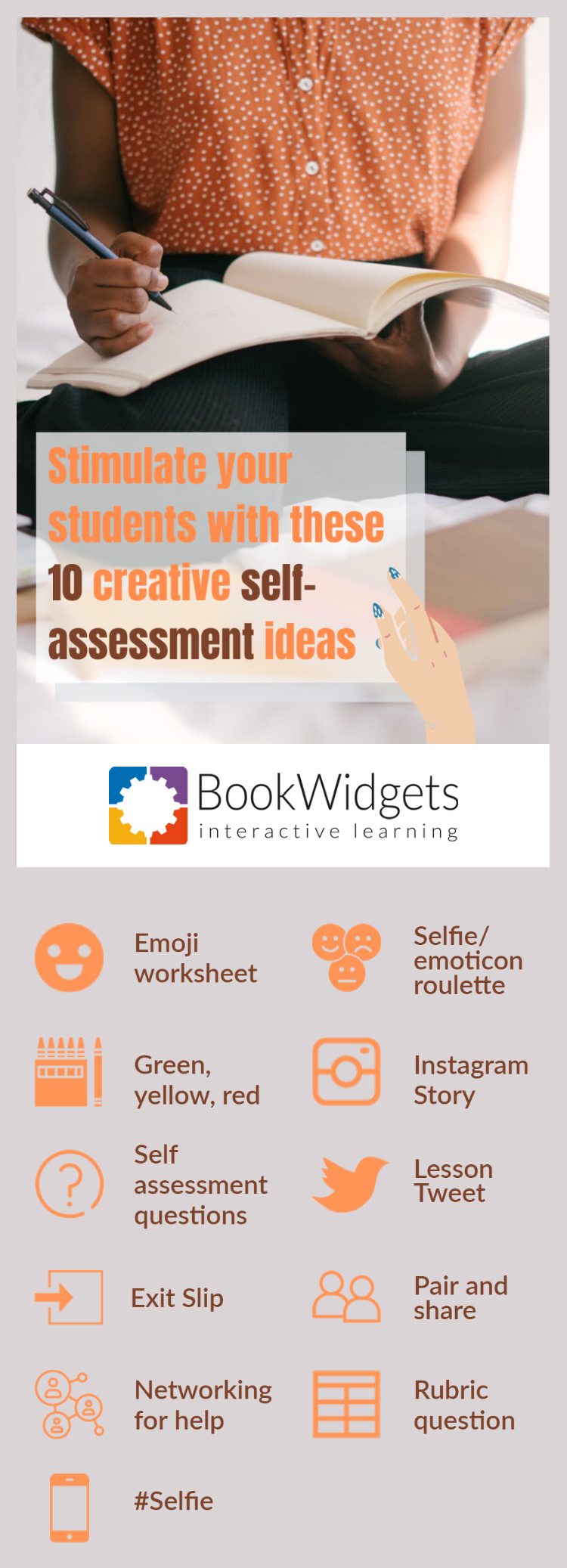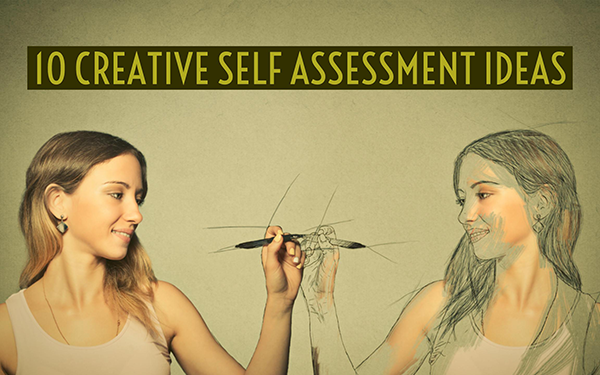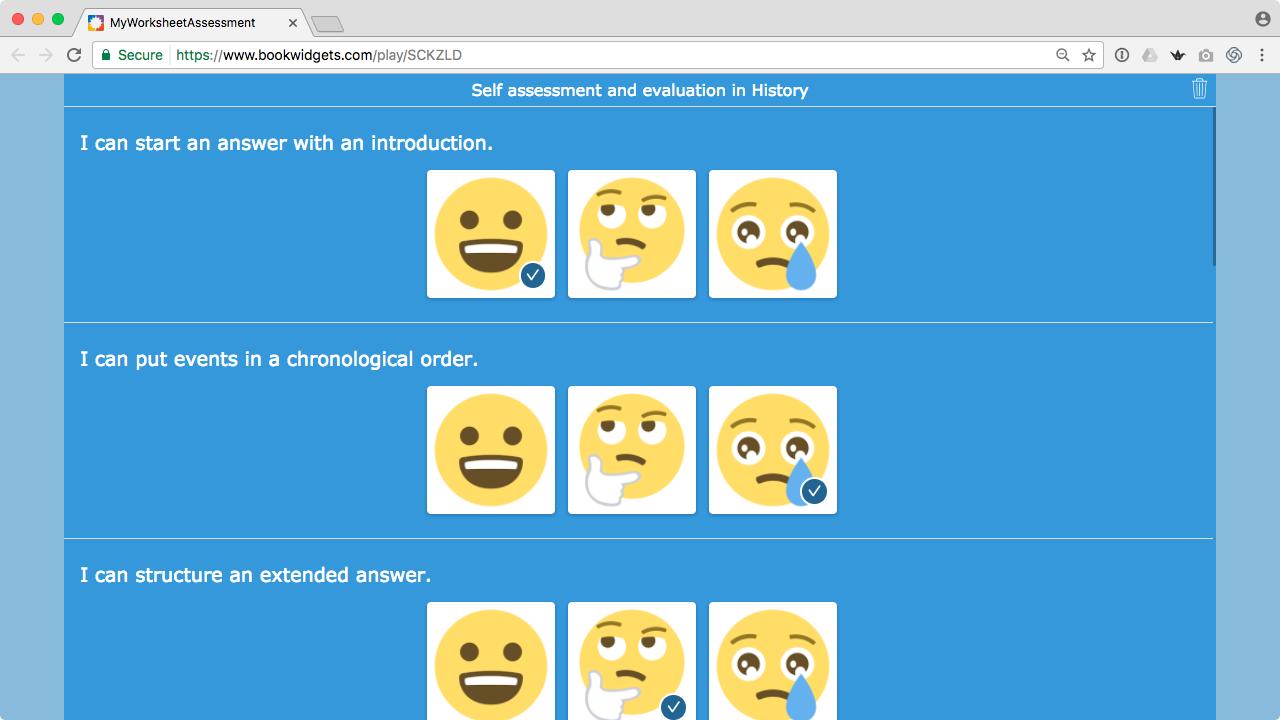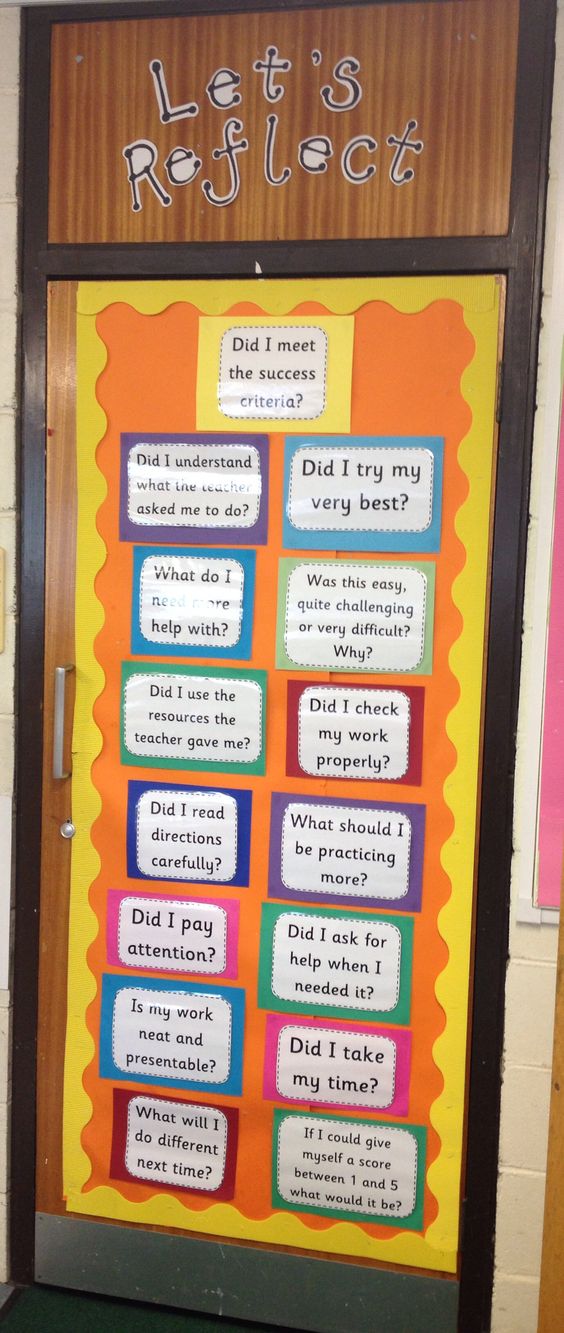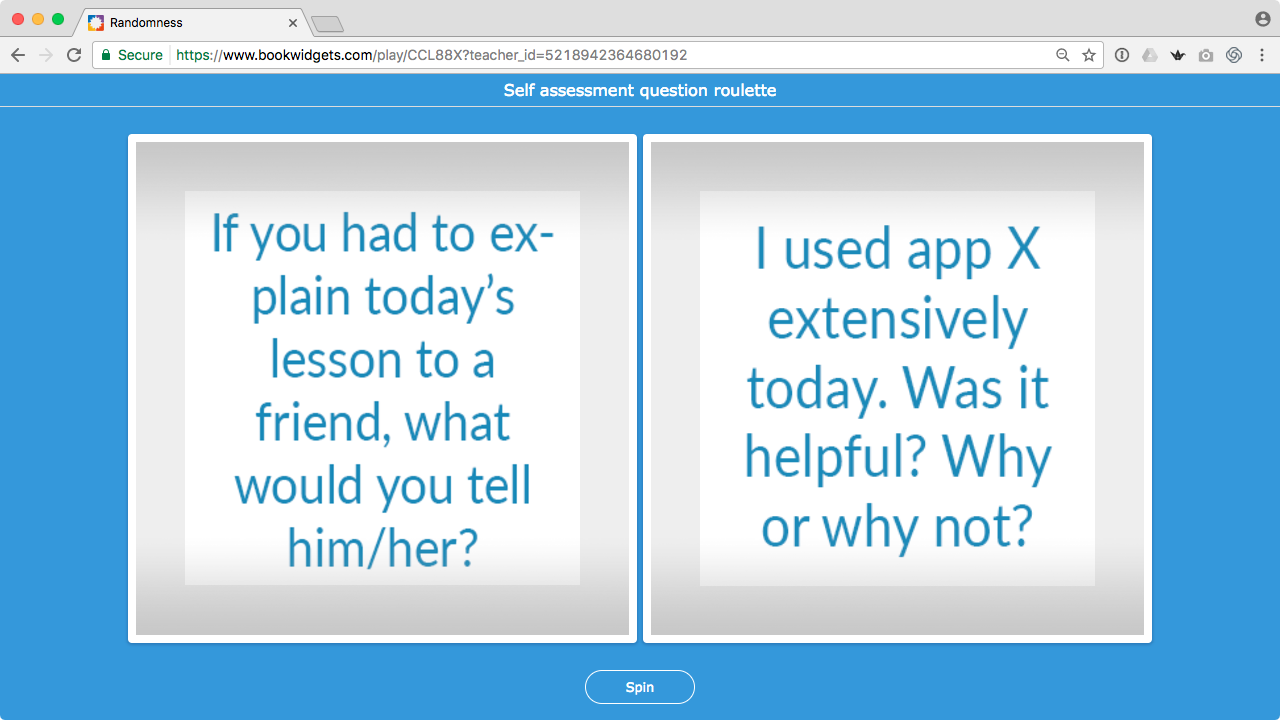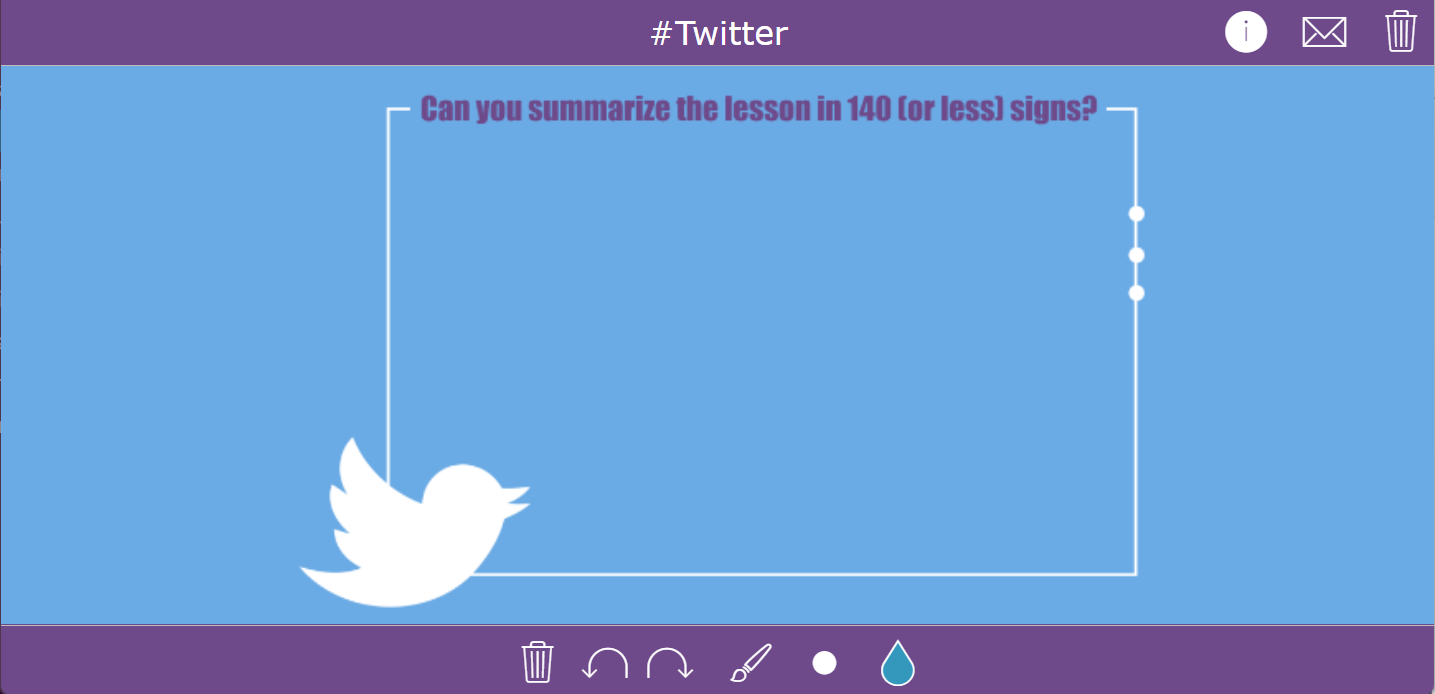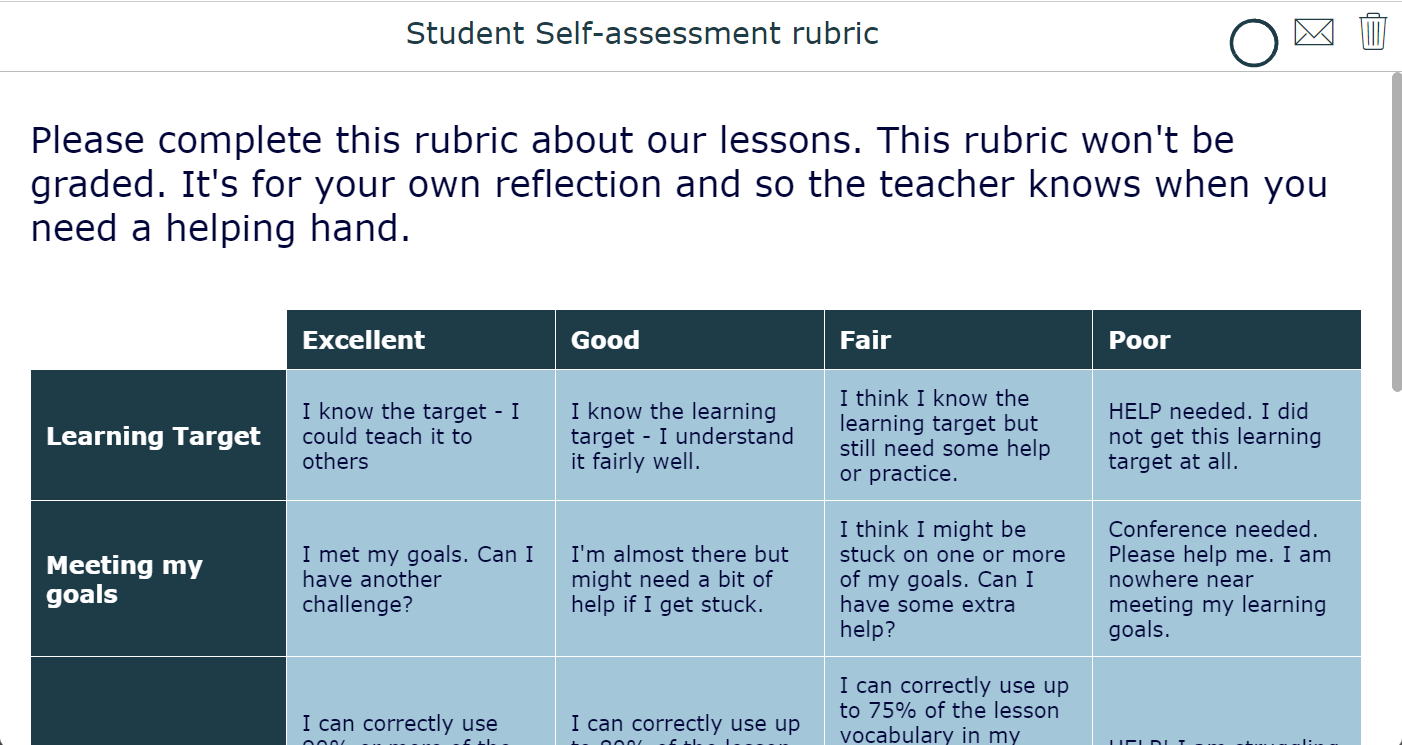Stimulate your students with these 10+ creative self assessment ideas
 Lucie Renard —
Lucie Renard —
As a teacher, you have to give constructive feedback all the time. And if you’re really giving so much meaningful feedback, then, that’s terrific! But not all teachers have the time to give students feedback all the time. It’s nice to know that giving feedback and grading your students is not the only way to assess students. I will show you how to assess students’ performance in a fun and easy way.
This post will guide you through some creative and new methods of self assessment. Yes, that’s right. Keep quiet for once and let your students assess themselves. You’ll find here some online self assessment tools for students and other self assessment examples.
10 Self evaluation ideas for students
1. Emoji worksheet
 The title says it all. Emoji worksheet. A worksheet students have to fill in by clicking on emojis. In this case, students have to choose one of the three emojis that match the statement.
The title says it all. Emoji worksheet. A worksheet students have to fill in by clicking on emojis. In this case, students have to choose one of the three emojis that match the statement.
As a teacher, you can add some other emojis if you like. That’s up to you. I’ve chosen for just three: Happy face or “I get it”, Thinking face or “I don’t quite get everything” and crying face “I’m stuck and need help”. Click on the image to take a look at this self assessment form for students.
2. Green, yellow, red
 Give each student three cards. A green, a yellow and a red card. Just like the emojis in the worksheet above, each card represents how students feel about the lesson material:
Give each student three cards. A green, a yellow and a red card. Just like the emojis in the worksheet above, each card represents how students feel about the lesson material:
- Green: I get it! I can do this by myself and even explain to others.
- Yellow: I need a little more help.
- Red: I don’t get it, I need a lot of help.
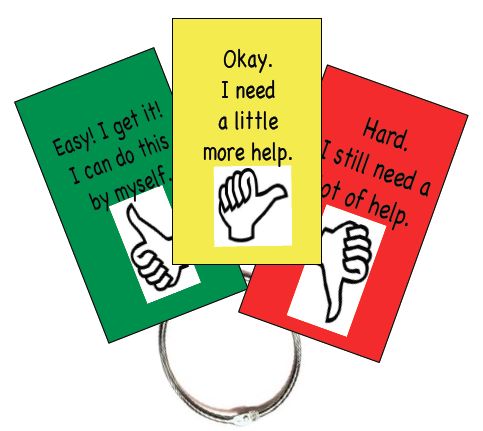
After teaching the theory and letting your students make some exercises, you make some time to do a self assessment with your students.
Ask your students to think about how they feel they are doing on the lesson material and let them raise one of the three cards. This way you can see which students understand the new topic, which students struggle a bit and which have a hard time understanding everything.
Now you have an overview of the students who get the new lesson material and the students who don’t. This makes it easy to differentiate. Make three groups and divide your students according to the cards. All the green cards go sit together, all the yellow ones and all the red ones.
Hand out some extra explanation and exercises to the groups. The green group can start practicing more advanced topics and dig deeper into the lesson material. The yellow ones start practicing some medium exercises and get some extra explanation. The red ones start from (almost) scratch. Here you have to explain the lesson material again so they learn the basics. As a teacher, you can join the red group first.
You can also do this using an online traffic light. Are you thinking: “What is she talking about?” the example below should make it clear.
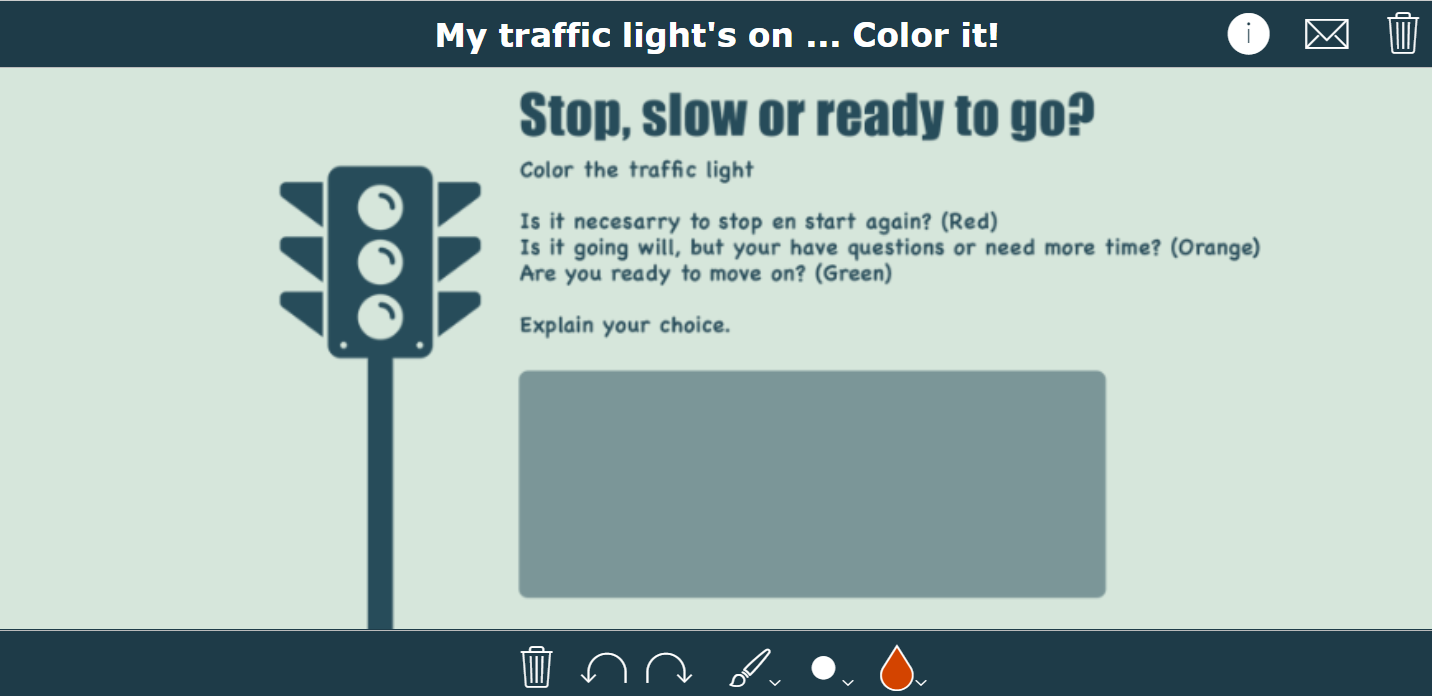
3. Self assessment questions
 Let your students go through some important self evaluation questions. You can display them on a wall in your classroom (elementary school), or you can use a QR code (high school). This way students have to scan the code after the lesson and go through the questions. They just have to spin the wheel and answer the question they got.
Let your students go through some important self evaluation questions. You can display them on a wall in your classroom (elementary school), or you can use a QR code (high school). This way students have to scan the code after the lesson and go through the questions. They just have to spin the wheel and answer the question they got.
4. Exit Slip
 An exit slip (a.k.a. exit ticket) is a great way to quickly gauge student understanding at the end of a lesson. It gives you a snapshot of how well students understood today’s lesson.
An exit slip (a.k.a. exit ticket) is a great way to quickly gauge student understanding at the end of a lesson. It gives you a snapshot of how well students understood today’s lesson.
Exit tickets should be short: ask every student one or two short questions about today’s lesson.
Take a look at this example below.
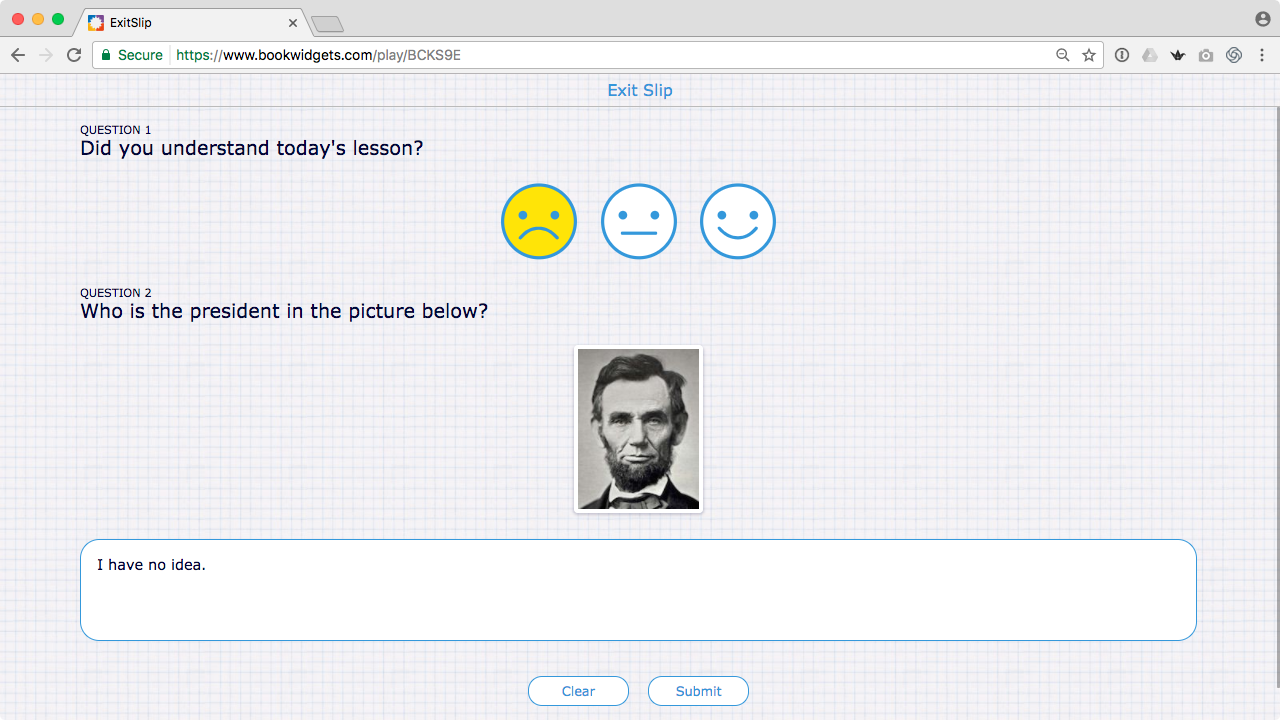
You can create these exit tickets in several ways. Discover 60 ready-to-use examples in this blog post.
5. Networking for help
 Remember the three cards students had to raise after a finished chapter? Well, in number two, the cards divide students into groups according to their learning level.
Remember the three cards students had to raise after a finished chapter? Well, in number two, the cards divide students into groups according to their learning level.
This self assessment idea “networking for help” is based on the same principle, except, now the teacher won’t help the students, but the students will help their fellow classmates.
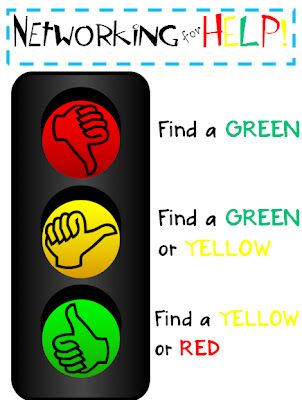
If you take a look at the image above, you’ll get what I mean. Students with a red card, have to pair up with a student with a green card. Students with a yellow card have to pair up with students with another yellow or green card. Students with a green card have to pair up with students with a red or yellow card. This way students help each other understand the lesson.
6. #Selfie
 But first. Let me take a #selfie.
But first. Let me take a #selfie.
Not really what I meant, but it’s close enough. When you talk about self assessment, you probably noticed the “self” in there. The #selfie strategy can be used to remind students to evaluate themselves or reflect on their work before handing it in. This one is used for math classes, but you can adjust the meaning to your course.
Selfie is short for:
Showed my work
Explained my answers
Lots of math vocabulary used
Found multiple solutions
I persevered through the problem
Eliminated careless errors
7. Selfie/ emoticon roulette
 It’s not over yet. Because students are so attached to their phones, you might as well let them use those smartphones as a self assessment tool.
It’s not over yet. Because students are so attached to their phones, you might as well let them use those smartphones as a self assessment tool.
Use the app Snapchat and ask your students to take a selfie. Students have to imitate an emoji in that selfie. The emoji or their face represents how they feel about the lesson. Did they understand it or not, do they still have questions, etc.
Ask your students to send it to your Snapchat teacher account. Then display your iPad or smartphone on the classroom projector. Each student has 10 seconds to explain what his selfie means. The teacher decides what extra help the student needs if necessary.
One more thing: It’s important to clearly state some rules and guidelines around the use of smartphones and social media like Snapchat if you choose to use it as an assessment strategy!
8. Instagram Story
 Life is one big story. Lessons are too. As it happens, Instagram kind of triggers us into making stories and taking pictures. And that’s what we are going to do in this self assessment example.
Life is one big story. Lessons are too. As it happens, Instagram kind of triggers us into making stories and taking pictures. And that’s what we are going to do in this self assessment example.
Like I said: lessons are stories. To really show this to your students, you can ask them to create an Instagram story of today’s lesson. What are the highlights of the lesson? What are the three main points of the lesson? Etc.
They don’t have to take pictures, just use their creativity using some crayons. They can summarize the lesson into nice steps or mindmaps, rebuses, drawings, and so on.
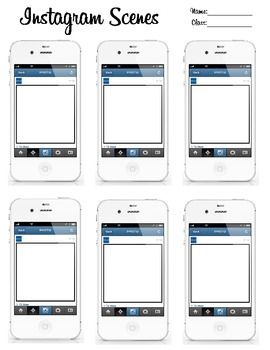
9. Lesson Tweet


Looks like social media comes in handy today. Can your students describe todays lesson in just 140 characters? What hashtag will they choose?
The image above is pretty clear. Let students formulate an answer on one of these three questions or on every question in a Twitter message.
- What did you learn today?
- What did you find tricky?
- What did you find fun to learn?
The hashtag represents something memorable from the lesson.
You can also ask them to summarize the lesson, as in the example below.
Students just have to fill in the papers, but for those who have Twitter it might be fun to do it for real!
10. Pair and share
 Here, the students pair up and ask some questions about the lesson material to their fellow student. These questions aren’t content questions. The questions have to make the other student reflect on himself, how he did, if he understood everything or what he could do better.
Here, the students pair up and ask some questions about the lesson material to their fellow student. These questions aren’t content questions. The questions have to make the other student reflect on himself, how he did, if he understood everything or what he could do better.
This way to assess student learning is not the most creative one, but it’s used more than the other self assessment strategies. It’s effective and easy to carry out in the classroom.
11. Rubric question
 To assess students objectively, it is important for teachers to prepare an assessment form. Have your students fill this out for themselves sometime after completing an assignment. It is not intended to give them points, but it can indicate the struggles of students and how they rate themselves.
To assess students objectively, it is important for teachers to prepare an assessment form. Have your students fill this out for themselves sometime after completing an assignment. It is not intended to give them points, but it can indicate the struggles of students and how they rate themselves.
How to get started on this? Find out here.
Since you are working with feedback and not putting grades on these examples, you can call them formative assessments. So we offer you the ultimate formative assessment guide for teachers.
Wrap up
So these were the ideas I found creative enough to share with you. These classroom assessment techniques are definitely something else than those boring question surveys and worksheets. I hope you like it!
I’ve made some of these examples with BookWidgets. If you’re interested in making interactive exercises for in the classroom, you can start here for free:
